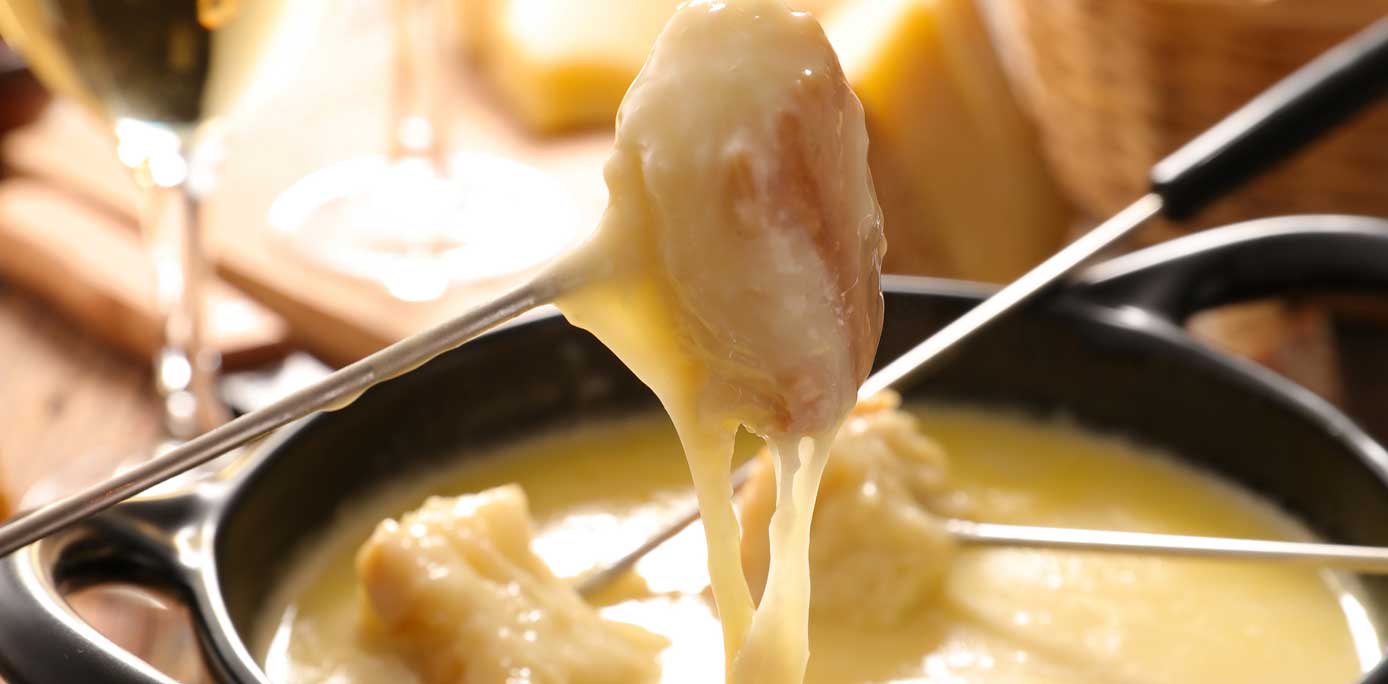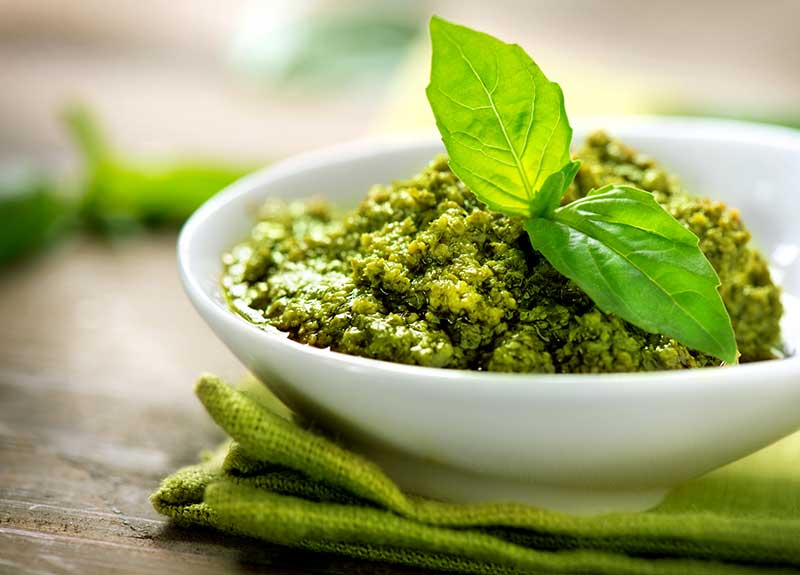Valle d’Aosta: “heaven for men, purgatory for women, hell for mules,” but certainly delicious for our palates!
Among mountains and castles, up there, in the western-most corner of Italy, the smallest of regions, Valle d’Aosta, winks at us. Stern and strong, but so welcoming and soft, just like one of its most famous dishes, fonduta.
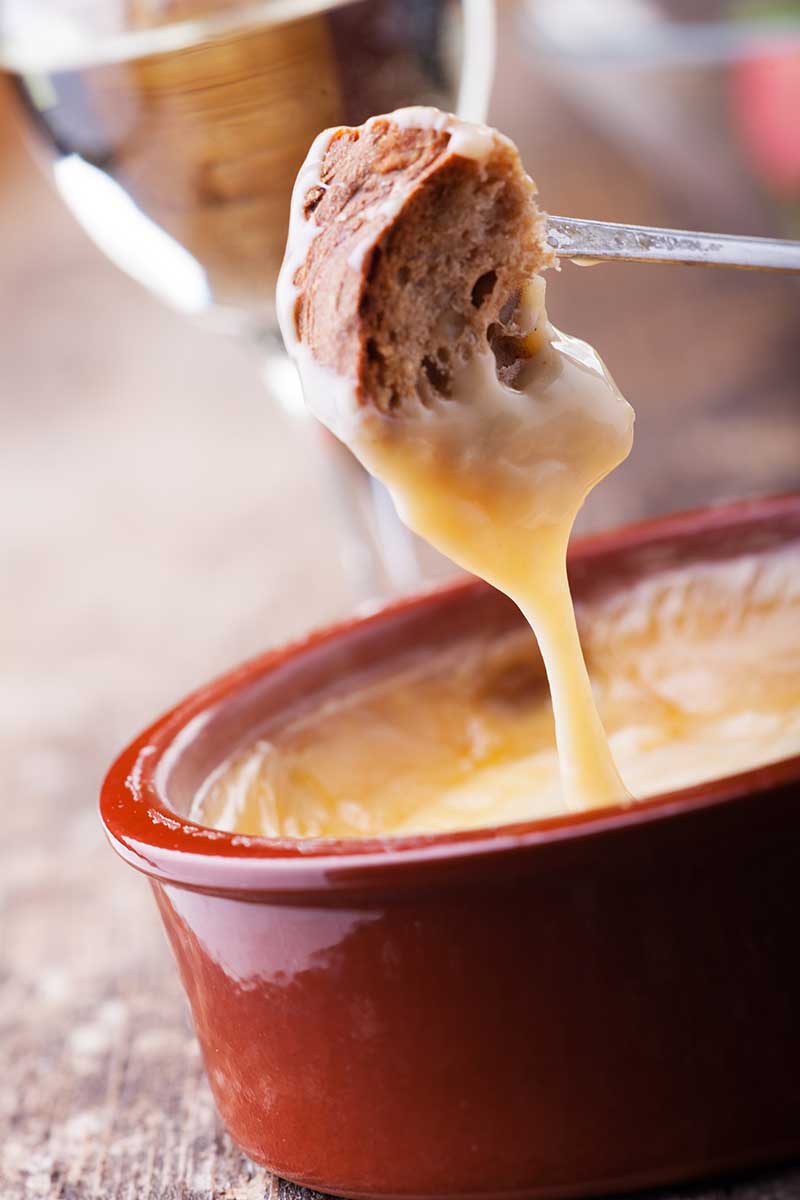
Fondue, a typical and delicious dish based on fontina cheese, characteristic of the Alpine area of Val D’Aosta
It is the only Italian region with a fully mountainous territory, for centuries protected and isolated from the rest of the world by the Alps’ most majestic peaks. Thanks to this isolation imposed by nature though, Valle d’Aosta’s culinary traditions remained virtually untouched.
Wheat, the great protagonist of Italian cuisine, is virtually absent here, whereas rye, barley, cabbage and game, all inherited from ancient Roman traditions, dominate the table. Along with them, the other main ingredients of the Valdostana pantry: butter and cheese.
Alpine cucina povera is also visible in the way foods are preserved: from the ubiquitous pork sausages, salami and sanguinacci (blood puddings), to pickled preparation (in carpione) and red wine and spices marinades, or civit.
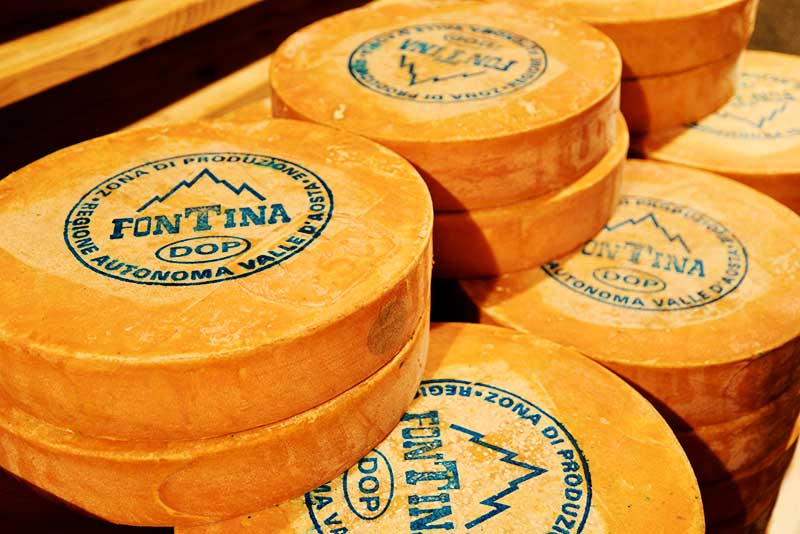
Beside the well known Fontina – whose whey is used to produce a cheese similar to ricotta, called Séràs – we can find the Toma di Gressoney and the Bleu d’Aoste (a type of blue cheese)
Vine was also brought by Roman legions and found here such a fertile ground that today Valle d’Aosta is known for its delicious wines which, beside being bottled and having gained DOCG and IGT denominations, are also used to prepare vin brûlé and the extra strong caffé alla grappa.
The cuisine of Valle d’Aosta is characterized by dishes based on meat and its products, while the vegetables used to accompany them are not many: beside potatoes and cabbage, we’ll find local delicacies like the dent de lion, fiori di zucca (zucchini’s flowers), the heads of wild thistle, carline (carline thistle) and many aromatic herbs.
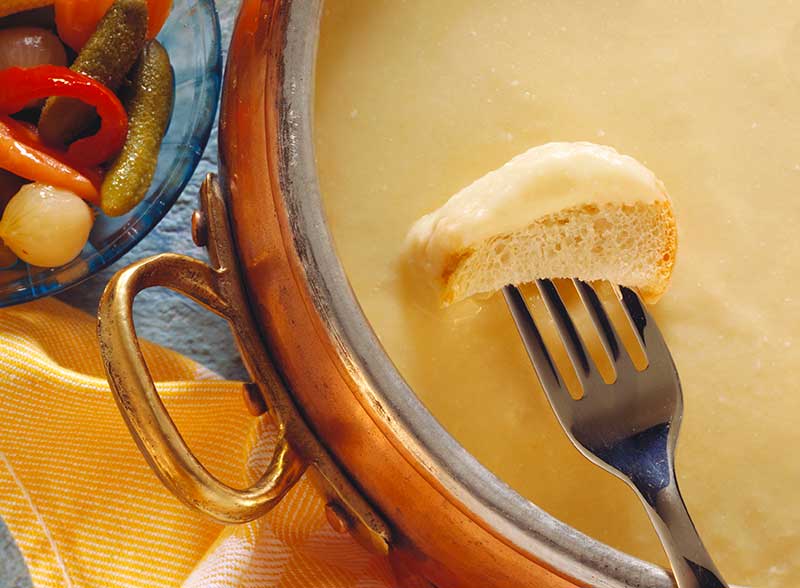
Fonduta is a heartwarming dish, perfect for winter evenings spent with friends © Margouillat | Dreamstime.com
Valle d’Aosta is also known for its delicious soups, like the ancient seupa de grì or the soupe paysanne, enriched with pork ribs and Alpine cheeses, as well as the ever-present rye and barley bread.
Cheese, the real pride of the region, is amazing. Beside the well known Fontina – whose whey is used to produce a cheese similar to ricotta, called Séràs – we can find the Toma di Gressoney and the Bleu d’Aoste (a type of blue cheese).
Desserts are simple and mostly based on butter, fresh milk, sugar or honey. Among the oldest, we should mention the Brochat, fresh milk with wine and plenty of sugar, and the Rhotia, a mix of egg, sugar, white wine, grappa, cinnamon and bread.
Bread making in Valle d’Aosta used to be a social event, a sort of epopee taking place once a year, at the beginning of the Winter. It was a rye brown bread, baked for a long time, then dried on special grills and then sliced with a special instrument called copapan or tsapiet, and then distributed among the village people, its crumbs were used to make soups.
And now, roll up your sleeves, because it’s time to prepare a true Valdostano meal. A perfect lunch in Valle d’Aosta should always start with a variety of local cold cuts and cheeses, which are unfortunately difficult to find outside the region. But let’s get the acquolina in bocca nevertheless: think of some toasted bread, lightly flavored with some garlic, topped with slowly melting slices of Lard d’Arnad, one of the region DOP products. Add some drops of mountain honey to it.
Let’s lead our palate to the discovery of Jambon de Bosses, a ham aged high in the mountains and then, let’s end this amazing starter with some thin slices of Motsetta, an ancient traditional cold cut made with a mix of different meats – chamois, games and pork – softened in walnut oil…
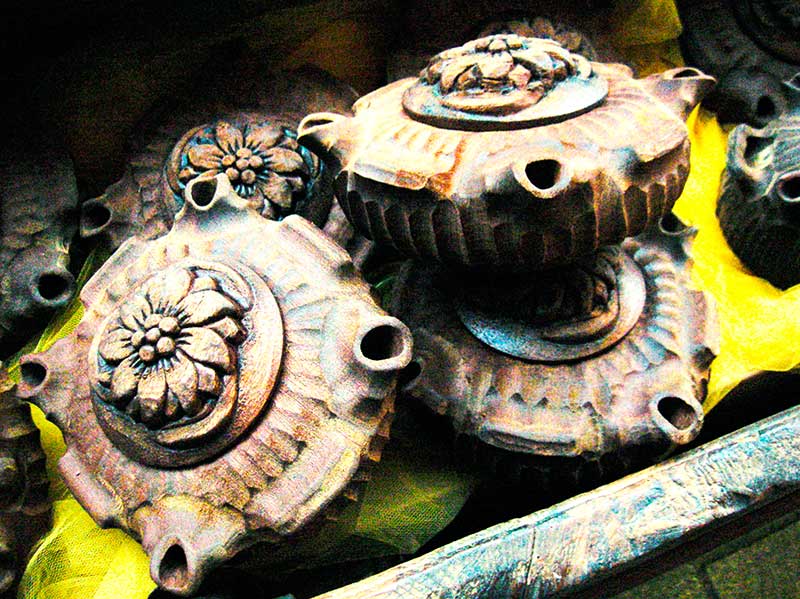
The Grolla is used to drink vin brûlé and caffé Valdostano © Sim082 | Dreamstime.com
Here’s our ultimate menu: the soupe paysanne , fonduta and a good caffé alla Valdostana, perfect to socialize and digest!
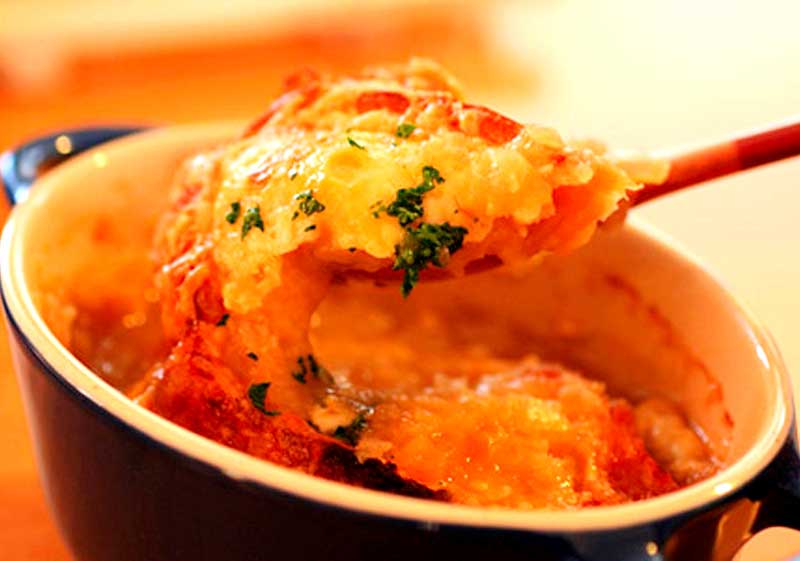
Soupe paysanne consists of several layers of cheese and bread, covered with broth and baked
Easy and Quick Soupe Paysanne (30 minutes)
(Ingredients for 4 people)
• 10 1/2 oz of stale bread (rye bread would be best, but a rustic brown bread will do).
• 7 oz of Fontina
• 7 oz of Valle d’Aosta toma cheese
• 7 floz of meat broth
• Grated cheese (the original recipe doesn’t call for any parmigiano nor grana padano, but it’s a nice addition!)
• Roughly cut the bread.
• Slice the cheeses thinly.
Directions
1) Cover the bottom of an oven dish with some slices of bread and then cover them with the Fontina and the toma. If you want, add some grated parmigiano.
2) Make a second and third layer, until you finish all the ingredients.
3) Pour the broth over it and bake at 360F for 10 minutes. Serve hot.
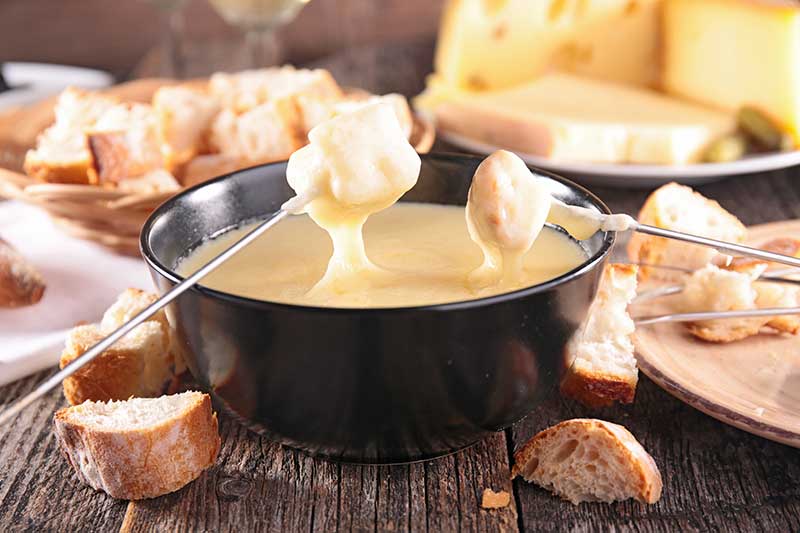
The cuisine of Valle d’Aosta is characterized by dishes based on meat and its products, while the vegetables used to accompany them are not many
Fonduta
(Ingredients for 4 people)
• 14 oz Fontina
• 8 1/2 floz full fat milk
• 1 oz butter
• 4 egg yolks
Directions
1) Cut the Fontina very thinly and place it in a large, deep bowl.
2) Cover with the milk and let it rest for a few hours (even one night).
3) When it’s time to prepare the fonduta, add all the ingredients into a saucepan and cook in a water bath stirring until you’ll obtain a smooth, thick cream. Careful though: it mustn’t be stringy, but velvety!
4) Once ready, add a pinch of black pepper and pour into bowls.
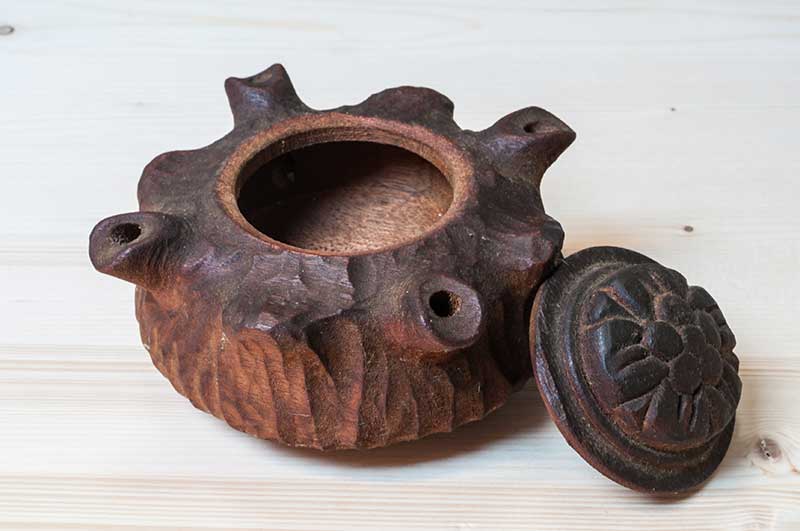
The Grolla is used to drink vin brûlé and caffé Valdostano © Sim082 | Dreamstime.com
Caffé Valdostano
Also known as Coppa dell’amicizia, it is served in one large bowl with several beaks (called grolla) which is passed among all diners anti-clockwise and placed on the table only when the coffee is finished. It is a great way to socialize and to digest your dinner!
Ingredients
• 6 small cups (tazzine) of espresso coffee
• 6 shots of white grappa (55 degrees)
• 6 shots of Grand Marnier
• 4 shots of Ginepy
• Some lemon rind
Directions
1) In the grolla, place 2 teaspoons of sugar per person, then pour very hot coffee.
2) Add the liquors, stir well, then heat the mixture up with your coffee machine’s steam nozzle to melt the sugar, paying attention not to bring it to the boil. In alternative, you can prepare and heat the coffee and liquors mix in a small saucepan.
3) Add the lemon rind and serve.
Let’s end our short trip to Valle d’Aosta with the verses of Giosué Carducci: through them, one can almost see and and feel the region:
la Valle D’Aosta.. E verde e fosca l’alpe, e limpido e fresco è il mattino, e traverso gli abeti tremola d’oro il sole. Cantan gli uccelli a prova, storniscono le cascatelle, precipita la scesa nel vallone di Niel…” (L’ostessa di Gaby, 1895).
(“Valle d’Aosta…dark and green are the mountains, and clear and fresh is the morning. The sun, just like gold, trembles among the fir trees. Birds sing, and so do the waterfalls, while the mountain paths run along the steep Niel Valley”).
for more information about Executive Chef and Author Varinia Cappelletti please visit www.gigliobianco.it and www.chefvary.com. In the U.S., her company features cooking demonstrations, private dinners, cooking classes and imported natural high quality food (www.gigliobiancousa.com)
